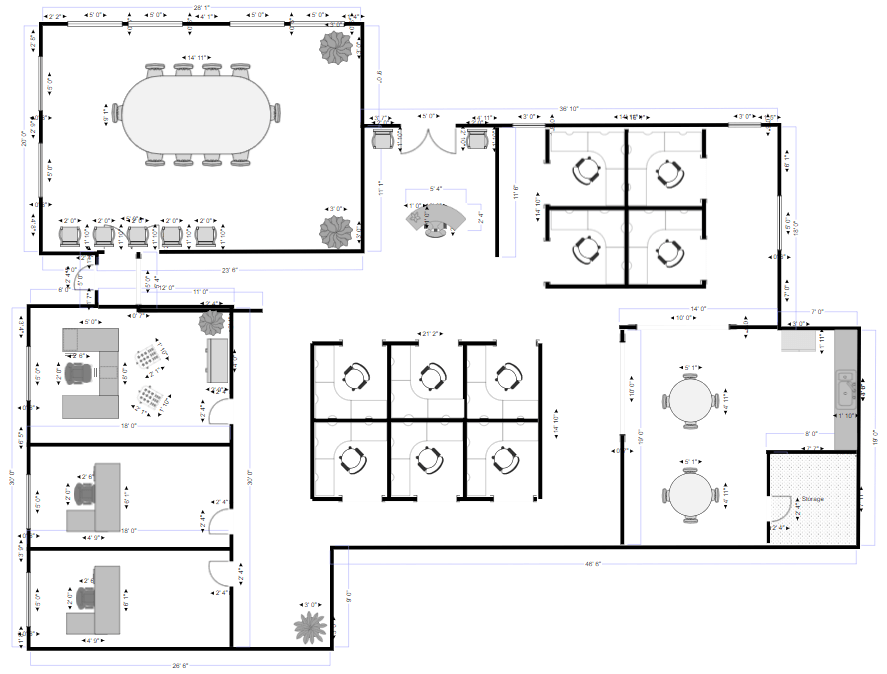Plan floor draw layout furniture interior rough ultimate pro guide drawn space tip copy master using
Table of Contents
Table of Contents
Are you planning to create a new house or remodel your current space? One of the most crucial steps in any home design project is creating a floor plan. It’s the foundation of any good design, helping you visualize the space and ensure everything fits perfectly.
Creating a floor plan can be a daunting task, especially if you aren’t experienced in architecture or design. It’s easy to get overwhelmed by the technical details, making the process feel like a puzzle that’s impossible to solve.
So, how can you create a beautiful and functional floor plan without giving yourself a headache? In this article, we will walk you through the steps of how to draw a floor plan in easy-to-follow detail.
To start, let’s go over the basics of drawing a floor plan. This process consists of several steps, including determining the scale, drawing walls and doors, labeling rooms, and adding furniture and accessories.
The Importance of Scale
When it comes to drawing a floor plan, the first step is determining the scale. Scale refers to the ratio of the drawing compared to the actual size of the room. Keep in mind that you’ll need to choose a scale that accurately represents your space while still being small enough to fit on paper.
One way to create an accurate scale drawing is by measuring the room dimensions with a tape measure and transferring them to a piece of graph paper. This method will help you ensure that everything fits in the space as planned.
The Role of Design Software
Thanks to technology, creating floor plans has become a lot easier in recent years. Many design software options and apps are available that can help you create a floor plan quickly and easily. For example, SmartDraw is a tool that can help you draw floor plans, create landscape designs, and even create charts and diagrams. Another option is SketchUp, which is a 3D modeling program favored by architects and designers.
Using design software is especially helpful if you have no experience in 2D or 3D design. These programs often have built-in templates and features, allowing you to produce a professional-looking drawing without having to worry about technical details.
The Benefits of Professional Help
If you are undertaking a significant project, such as designing your dream home, you might want to consider hiring professional help. An architect or designer can help you create a floor plan that maximizes the available space, suits your style and meets all the necessary requirements.
While it will certainly cost you more than doing it yourself, investing in professional help can ultimately save you time and money in the long run. Plus, they can offer helpful advice on aspects of the design that you might not have considered.
Tips and Tricks for Drawing a Floor Plan
Here are some additional tips to keep in mind when drawing a floor plan:
- Start by sketching out the room on paper to get an idea of how you want the space to look
- Be sure to include all the elements, such as doors, windows, and closets, as well as electrical outlets and heating vents
- Keep the flow of the space in mind, making sure that you can easily move from one room to the next
- Try different furniture arrangements to see what works best in the space
- Add measurements to the floor plan, including the size of each room and the ceiling height, so you can get an idea of how much floor coverage you’ll need
Question and Answer
Q: What is the most traditional way to draw a floor plan?
A: The most traditional way of drawing a floor plan, aside from pen and paper, is by using drafting tools, such as a T-square, ruler, and protractor.
Q: Can I draw a floor plan without any design software?
A: Yes, it is possible to draw a floor plan without design software. You can use a piece of graph paper and a pencil to sketch out the room dimensions, doors, windows, and furniture placement.
Q: How do I know when a floor plan is complete?
A: A floor plan is complete when it includes all necessary elements, such as walls, doors, windows, electrical outlets, and furniture placement. Be sure to double-check measurements and labeling before considering it complete.
Q: Can I make changes to the floor plan after it’s complete?
A: Yes, you can make changes to the floor plan at any point in the design process. Keep in mind that making changes later on in the project may cause delays and additional costs.
Conclusion of How to Draw a Floor Plan
Drawing a floor plan may seem intimidating, but it doesn’t have to be. With the right tools, tips, and knowledge of the process, anyone can create a beautiful and functional floor plan for their home design needs. Remember to start with a scale and consider using professional help if needed. Happy designing!
Gallery
How To Draw A Floor Plan Like A Pro - The Ultimate Guide - The Interior

Photo Credit by: bing.com / draw floor plan space ultimate pro guide furniture tip interior allow ensure wardrobes cupboards units opening such need
I Will Draw A Floor Plan In Coreldraw | 3D & 2D Models Drawing

Photo Credit by: bing.com / plan floor draw coreldraw drawing autocad fivesquid redraw 2d models 3d
How To Draw A Floor Plan Like A Pro - The Ultimate Guide - The Interior

Photo Credit by: bing.com / plan floor draw layout furniture interior rough ultimate pro guide drawn space tip copy master using
How To Draw A Floor Plan - A Beautiful Mess
Photo Credit by: bing.com / plan floor draw drawing plans house interior sketch paper graph create mess abeautifulmess computer furniture any beautiful board templates printable
Draw Floor Plans | Try SmartDraw FREE And Easily Draw Floor Plans And More

Photo Credit by: bing.com / floor plans draw plan smartdraw office easy wcs






